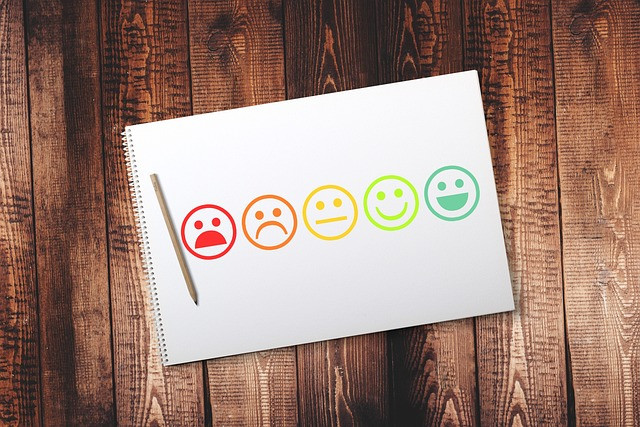- Research platform
Sources of information
Data analysis
Actions
- Solutions
For whom
Problems / Issues
- Materials
Materials
- About us
About us
Customer Effort Score (CES) is a key indicator of customer effort score surveys and used in user experience management, through which we learn about how much effort a customer interacts and the evaluation of the customer's effort to solve their problems or get answers to their questions when using a product or service. It is a research method that allows companies to assess the effectiveness of their processes and customer contact processes, and thus identify areas that need attention.

The Customer Effort Score is based on a simple survey question in which respondents rate how easy they found it to complete a specific action, such as making a purchase, getting technical support or resolving a problem with a service or product.
The value of the Customer Effort Score lies in its simplicity and its direct link from customer happiness to consumer loyalty. Studies show that users who seamlessly achieve their goals in their interactions with a company with high customer effort score, are more satisfied with future purchases, more likely to make repeat purchases and more likely to recommend the company to others.

Measuring Customer Effort Score is usually done through a short survey sent after a service interaction or purchase. Here are some steps to help you effectively measure your customer effort scores and score survey scores for CES:
Identify the moments when users interact with your company that are critical to their experience.
Design a survey with a simple question measuring customer effort and optionally some additional questions to help understand the reasons for the low customer effort, here.
The average score from the CES surveys provides insight into how easily customers can complete their tasks. Low scores indicate areas that need attention.
Based on the data collected, make necessary changes to processes or product. Then, continue to collect customer feedback to evaluate the effects of the improvements.

CES score directly correlates with user satisfaction. The less effort an individual has to put in to get what they need, the higher their satisfaction. Knowing the value enables companies to identify points where customers are experiencing difficulties, which in turn allows you to make changes to improve those areas (such as customer service) of your business. In this way, organizations can not only increase the satisfaction of their customers, but also build long-term relationships based on positive experiences. A great deal of effort put into solving one's problem, especially when combined with a stressful situation requiring customer service contact, will certainly translate into customer resentment. A higher customer effort score calculation is associated with less effort means customers interact with fewer problems, which is worth differentiating yourself in the market. It also a customer service touchpoint translates into less stressed customer support team, which a customer would look for when having a problem.
Customers who experience low levels of effort when interacting with an organization are more likely to buy again and recommend the company to others. Measuring and optimizing the experience can therefore directly contribute to increased overall customer loyalty too. Loyal customers not only generate recurring revenue, but also act as natural brand ambassadors, attracting new customers through positive recommendations.
By identifying and eliminating unnecessary obstacles for customers, organizations can significantly reduce operating costs. Processes that are difficult and time-consuming often also require greater involvement of the customer service team, support team and other organizational resources. Improving these processes using the Customer Effort Score question can help make more efficient use of resources and reduce the burden on service teams and support team.
Companies that regularly measure customer experience metrics and adjust their strategies based on the data instant feedback they receive show a greater capacity for innovation. Understanding customers' needs and difficulties becomes the foundation for creating new solutions, product improvements and any service that better meets market expectations. This attitude not only increases an organization's competitiveness, but also positions it as a leader in the customer experience area.
In today's fast-changing business world, where buyers have access to a wide range of products and services, the ability to deliver low levels of customer and effortless experience becomes a key differentiator. Companies that effectively measure and optimize CES can better respond to customer needs, thereby decreasing customer effort and differentiating themselves from the competition.
Customer Effort Score evaluation is not only a strategy to improve direct indicators of buyer satisfaction and loyalty, but also a powerful tool to optimize internal processes, innovate and build sustainable competitive advantage. Providing a response ces surveys does not involve much effort for the customer, which also because high effort service interaction translates into high conversion from positive responses and negative feedback to such a survey.

The Customer Effort Score is designed to measure the level of effort customers had to see how much effort they put into using your company's product or service. Below you will find examples of CES questions that you can use for low customer effort and in your research:
"Rate on a scale of 1 to 7 how easy it was for you to choose products today?"
"How difficult was it to solve your problem with our help?"
"How easy was it to get the information you needed from us?"
"Rate how prsto it was to complete your purchase on our website?"
"How easy was it to contact our service department?"
"How easy was it to use our self-service function (e.g., password reset function) on a scale of 1 to 7, where 1 means very difficult and 7 means very easy?"
"Rate how easy it was to find the solution to your problem in our knowledge base?"
"How simple was it to return a product or make a complaint about an order?"
"How intuitive was it to get help from our chatbot?"
Using examples of questions, you can better mine customer data to understand what aspects of your offering need improvement to streamline the customer experience, to reduce buyer effort and increase satisfaction.

The Customer Effort Score is relatively straightforward to calculate and can provide valuable information about the ease with which customers can perform certain actions or solve problems when interacting with your company, product, or service. Here's how you can calculate a full customer effort score calculation here's CES - assuming you're using a scale of 1 to 7 (a seven-point Likert scale), where 1 is the highest level of customer effort score, and 7 is the lowest, ask customers to rate their experience according to this scale. To calculate the CES value, add up all the responses from respondents, and then divide the total by the number of responses. This will give you the average value of the customer effort score question and rating. It is possible to use a different scale if needed, for example, if you were to be required by the overall process and CX system. It is important to use an odd scale, such as a scale of 1 to 5, and still keep the form of the question simple.

An indicator can be a valuable tool for predicting future customer buying behavior. By focusing on measuring the level of effort required of shoppers when placing an order, for example, a CES survey provides insight into customer behavior and how the ease or difficulty of these interactions may affect future purchase behavior and decisions. Here's how the CES question can be used to predict future buying behavior:
Low effort = Higher loyalty. High effort = Lower loyalty: If a customer had to put less effort into an interaction when making a purchase or using a self service experience, they are more likely to disloyal customers but remain loyal to the brand with a low effort or high effort service interaction experience high certainty. Loyal customers are more likely to purchase again and recommend the brand to others, which can be used to predict increased sales and positive reviews.
Friction point analysis: By onboarding process and identifying and eliminating friction points through the use of a satisfaction index, organizations can streamline purchase paths and even improve customer service or enhance self-service. Simplifying the buying process can directly increase conversion and purchase frequency.
Customization: Information gleaned from CES can help better understand customer needs and preferences, enabling more targeted and personalized offers. Personalization increases shopper satisfaction and can result in higher customer retention and higher purchase value.
Referrals by satisfied customers: Customers who have efficiently achieved their goals , are more likely to have successful business and recommend it to others. A little effort means a good experience. By using self service options, reducing customer effort and analyzing the response received to the customer satisfaction survey question, companies can anticipate potentially high growth through recommendations, which is an important factor for organic business growth.
Identify the risk of churn: If a customer has had to put more effort into solving their problem, they will potentially have a low effort experience and higher risk of churn. Monitoring good customer effort score and taking corrective action in low-performing areas decreasing good customer effort score can reduce churn and improve predictability of buying behavior.
Trend analysis: Analyze CES data over time to identify trends and behavioral patterns in each customer. This information can help predict future buying behavior, enabling companies to better plan marketing and sales strategies.

Customer Effort Score (CES), Net Promoter Score (NPS) and Customer Satisfaction (CSAT) are three key metrics used to measure the customer journey, experience and satisfaction:
What it measures: The CES question assesses how much effort a customer has to put in to perform a specific action, such as solving a problem, making a purchase, or getting help.
When to use: Ideal for assessing the effectiveness of customer service processes, especially in the context of resolving problems or providing support.
Advantages: Focuses on ease of task completion and speed of problem resolution, which is directly related to customer loyalty.
Limitations: Does not provide a complete picture of overall customer satisfaction or willingness to recommend the brand.
What it measures: The Net Promoter Score question measures the likelihood with which a customer will recommend a company, products, or service to others. The key question is "How likely are you to recommend our company/business/product to your friends or family?"
When to use: Great for assessing customer loyalty and a brand's potential ability to generate positive recommendations.
Advantages: A simple and versatile indicator, quickly calculated, that can be used in a variety of industries and situations. Researchers are now eager to use this question.
Limitations: Does not provide detailed information on the reasons for low or high loyalty
What it measures: A CSAT question assesses a customer's overall satisfaction with a product, service or specific experience. Questions can be phrased in a variety of ways, such as "How would you rate your overall satisfaction with...?"
When to use: Useful for quickly assessing customer satisfaction after interacting with a company, purchasing a product or using a service.
Advantages: Provides direct information on the degree of customer satisfaction.
Limitations: May not reflect the full scale of customer loyalty or willingness to recommend a brand.
CES, NPS and CSAT survey responses complement each other, providing a comprehensive picture of customers' experience with an entity regardless of the situation. To get a complete picture of customer relationships, organizations should consider using all three metrics to make customer success teams identify areas for improvement and implement strategies to make the different customer touchpoints increase satisfaction and improve customer loyalty afterwards. In particular, it is worth considering sending out a survey after significant processes have been completed, as many customers are accustomed to.
The CES survey of customer trust is an invaluable tool for companies seeking to continuously improve the customer experience. By using customer effort score benchmark evaluating the effort required of customers, organizations can not only identify areas in need of attention, but also make changes that realistically improve user satisfaction. As a result, CES management of customer feedback leads to increased brand loyalty, reduced churn, boost customer loyalty, and building a stronger competitive advantage in the marketplace.
How often should CES surveys be conducted?
Customer Effort Score surveys should be conducted regularly, at the right time from the customer interaction, in order to monitor and evaluate the buyer experience on an ongoing basis. The optimal frequency depends on several factors, such as the product lifecycle, the frequency of customer interactions, and the dynamics of changes in customer service processes. Many companies choose to conduct these surveys after every transaction or customer service interaction, allowing them to quickly identify and resolve issues. Others may send surveys to customers quarterly or annually to get an overall picture of buyer satisfaction.
Are CES surveys suitable for every type of business?
CES surveys are a versatile tool that can be used in almost any type of business, regardless of the size of the entity or industry. They are particularly valuable in sectors where ease of brand interaction has a direct impact on customer loyalty, such as e-commerce, financial services, telecommunications, and healthcare. However, the way CES results are implemented and interpreted can vary by business, requiring a tailored approach to meet the unique needs and expectations of consumers.
What are the best practices in CES data analysis?
Best practices in CES data analysis include:
Segmentation - analyzing results in the context of different customer groups can reveal unique needs and expectations.
Comparison with other metrics - integrating CES data with other metrics, such as NPS or CSAT, for a comprehensive view of shopper satisfaction and loyalty.
Time trends - observing changes in CES scores over time allows you to identify patterns and effects of changes made.
Correlation analysis - understanding how changes in customer effort affect other important metrics, such as loyalty, repeat purchases, or recommending a brand to others.
Are there industries that will particularly benefit from CES research?
Industries with high levels of customer interaction and complex purchasing processes, such as e-commerce, financial services, telecommunications, healthcare, and the service sector, will benefit most from satisfaction surveys. In these sectors, even a small reduction in customer effort can make a significant difference in satisfaction, loyalty and overall customer value to the company.
How can CES responses be increased?
Simplify the response process: Make sure the response process is as simple as possible. Short, concise questions and an intuitive interface can significantly increase the chances that respondents will complete the survey. It is important to use an intuitive scale from 1 to, for example, 7.
The right timing: Send surveys at the right time, such as right after a customer's interaction with your service desk, completion of an order or other experience with your company. The moment when the customer is most engaged is the ideal time to get feedback. A survey sent shortly after a customer service interaction will not require you to recall the situation to which the survey relates.
Communicate values: Explain to participants how important their feedback is and how it will be used to improve quality. People are more likely to cooperate if they see that their input matters.
Personalize communication: Personalized invitations to participate in a survey can increase its effectiveness. Using the recipient's first name or a reference to a recent interaction can help make a better connection.
Optimize for mobile devices: Make sure surveys are easy to complete on mobile devices, as more and more people are accessing the internet via cell phones and tablets.
What are the biggest challenges of the CES survey?
Data interpretation: It is sometimes difficult to interpret the responses to a CES question unequivocally, especially when different segments of buyers may have different expectations of "acceptable" levels of effort.
Respondent participation: As mentioned above, one of the main challenges is getting customers to participate in the survey. A low response rate can lead to incomplete or inaccurate data.
Changes in buyer expectations: Buyer expectations are constantly changing, which can affect the interpretation of CES results over time. Companies need to regularly update their surveys to respond to current trends and preferences.
Acting on feedback: Collecting data is one thing, but the real challenge is implementing changes based on the information obtained. Organizations often struggle to convert research findings into concrete action that will improve the customer experience.
Copyright © 2023. YourCX. All rights reserved — Design by Proformat